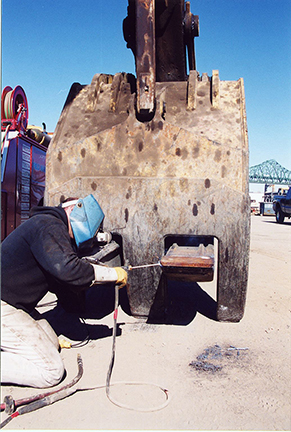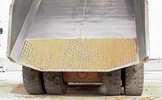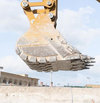- Location
- Grand Junction, CO
I figure we have enough guys on here that weld, fabricate and even work on heavy equipment for a living... might as well get some opinions.
This bucket is about 3 years old, cost $20k new has been used to ditch and move lots of Granite rock over the last few years. It's wearing on the back side of the bucket to the point that the seam is showing and its probably wearing thin. We could send it out to a welding and machine shop and have it rebuilt, but I don't think it's ready for that yet. And a field repair would be much quicker than sending it into a shop.
I'd like to extend its life, get more use out of it before it needs to get rebuilt.
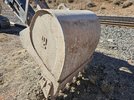
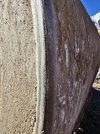
I'm thinking about buying 1/2" thick AR (abrasion resistant) steel plate, having it cut in 2" wide strips and welding the pieces horizontally around the curve of the bucket, with just enough gap between the plate for a solid weld, capping the welds with hard facing rod.
Tomorrow I'm going to see what the local CAT dealer has for weld-on wear bars, they would be a high carbon steel plate.
Any other ideas?
This bucket is about 3 years old, cost $20k new has been used to ditch and move lots of Granite rock over the last few years. It's wearing on the back side of the bucket to the point that the seam is showing and its probably wearing thin. We could send it out to a welding and machine shop and have it rebuilt, but I don't think it's ready for that yet. And a field repair would be much quicker than sending it into a shop.
I'd like to extend its life, get more use out of it before it needs to get rebuilt.


I'm thinking about buying 1/2" thick AR (abrasion resistant) steel plate, having it cut in 2" wide strips and welding the pieces horizontally around the curve of the bucket, with just enough gap between the plate for a solid weld, capping the welds with hard facing rod.
Tomorrow I'm going to see what the local CAT dealer has for weld-on wear bars, they would be a high carbon steel plate.
Any other ideas?

